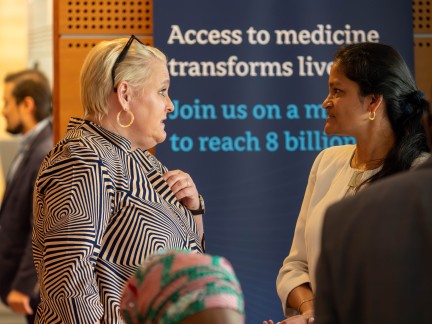How to make sustainable regional production of antiretrovirals in Africa a reality
In the global fight against HIV and AIDS, securing access to affordable and uninterrupted antiretroviral (ARV) treatment stands as a critical pillar of public health.
Recent years have seen an increasing recognition of how important regional production can be to securing a reliable supply of medicines and vaccines – but large-scale local manufacturing is still an ambition rather than a reality in Africa, with many countries importing around 80% of pharmaceuticals to meet the needs of their citizens.
This World AIDS Day, as the spotlight falls again on this deadly disease, we must consider: what role can regional production play in boosting access to key treatments – and what will it take to enable this to happen?
In the past few decades, there has been incredible progress in HIV treatment. By 2022, around 29.8 million people were receiving ARV therapy, and the number of AIDS-related deaths has dropped by over 98% since the start of the epidemic.
Funding from key donors, such as the Global Fund to Fight AIDS, Tuberculosis and Malaria, as well as the efforts of generic medicine manufacturers - particularly Indian generic companies in expanding access to affordable ARVs - have significantly reduced treatment costs.
The world, particularly Africa, has made significant progress toward achieving the UNAIDS '95-95-95' targets, which aim for 95% of people living with HIV to know their status, 95% of diagnosed individuals to be on treatment, and 95% of those on treatment to have suppressed viral loads.
Read the full op-ed on the Citizen Digital website.


